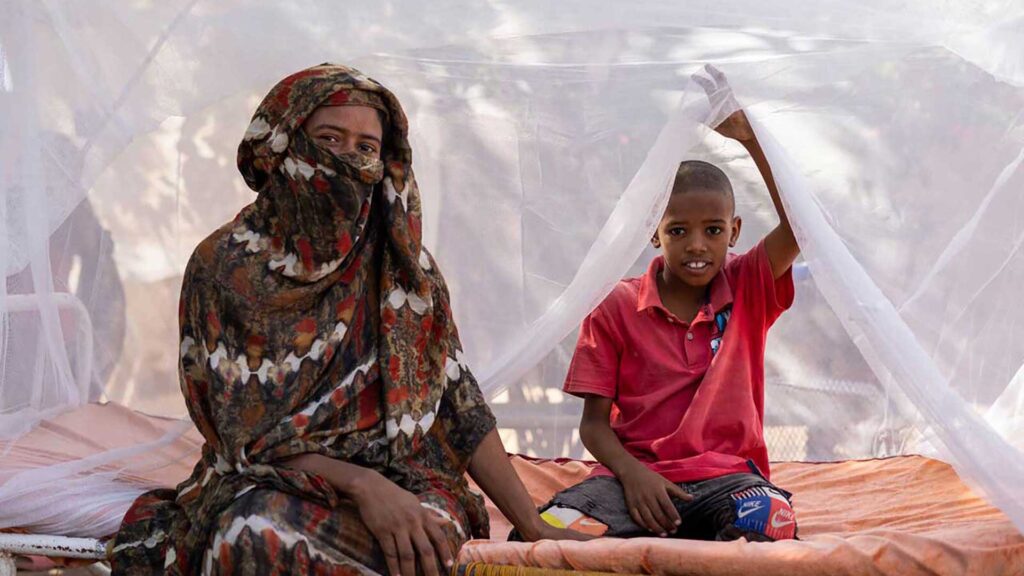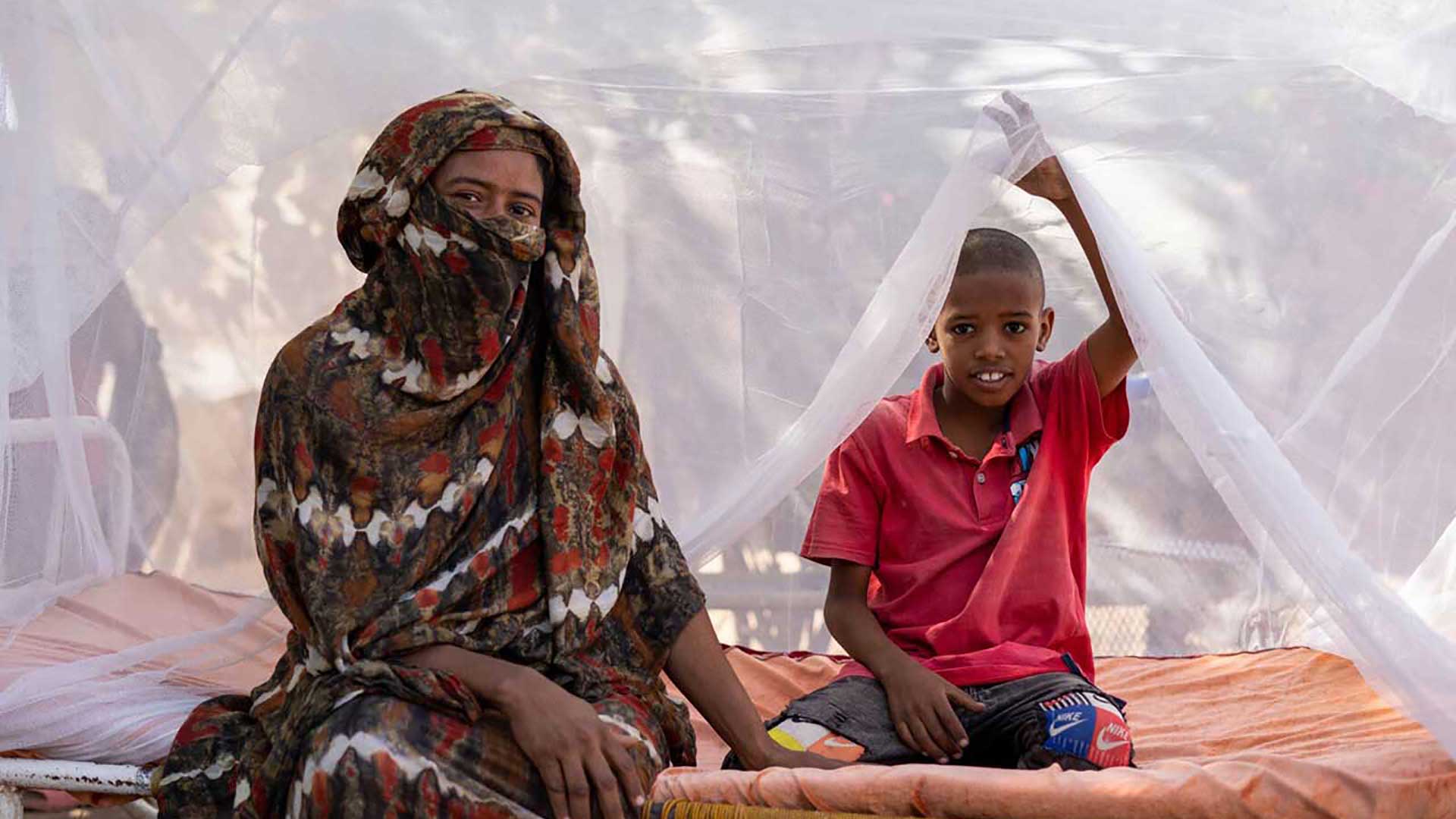How accurate is the diagnostic process for malaria, and what challenges may arise?

Have you ever felt the sting of a mosquito on a warm summer night? What if that tiny insect carried more than just an itchy bite? Malaria, a silent predator lurking in the shadows, threatens millions worldwide.
Malaria, a disease transmitted through mosquito bites, poses a significant health threat globally. Accurate diagnosis is pivotal in effective management and surveillance, aiding in timely treatment and preventing its spread.
Right now, malaria diagnosis is like playing hide-and-seek with microscopic villains. We’re armed with tools like microscopes and rapid tests, but they must be foolproof. And guess what? The game’s getting trickier.
In Africa, where malaria runs rampant, only a fraction of cases get confirmed diagnoses. It’s like trying to hit a moving target blindfolded.
But fear not! We’re not defenceless. Artemether & Lumefantrine Tablets, a dynamic duo fighting malaria’s wrath. They could be better, but they’re a step in the right direction.
- Key Takeaway
- Diagnostic Methods for Malaria
- Accuracy of Diagnostic Tests
- Artemether & Lumefantrine Tablet: At your rescue
- Wrapping Up: Tackling Malaria Head-On
- FAQ's
- How can I avoid malaria while travelling to endemic areas?
- What should I do if I experience severe side effects from antimalarial medication?
- Is it possible to get re-infected with malaria after treatment?
- What measures are being taken to improve malaria diagnosis and treatment globally?
- Can malaria be transmitted from person to person, or is it only through mosquito bites?
Key Takeaway
| Importance of Accurate Diagnosis | Challenges in Malaria Diagnosis | Artemether & Lumefantrine Tablet |
|---|---|---|
| Timely treatment and prevention | Low confirmed diagnosis rate | Combination antimalarial |
| Efficient resource allocation | Changing epidemiology | Effective against P. vivax |
| Prevention of drug resistance | Detection of hidden parasites | Common side effects: headache, weakness, joint pain, vomiting, loss of appetite |
Diagnostic Methods for Malaria
Diagnostic methods for malaria primarily rely on two essential tools:
- Microscopy and
- Rapid diagnostic tests (RDTs).
Microscopy: Microscopy involves examining blood samples under a microscope to detect malaria parasites. Trained technicians identify and count the parasites, providing a definitive diagnosis. Despite being the gold standard, Microscopy requires skilled personnel, quality equipment, and time, making it less accessible in remote or resource-limited settings.
Rapid diagnostic tests (RDTs) offer a quick and convenient alternative. These tests detect specific malaria antigens in blood samples and provide results within 15-20 minutes. They are more straightforward and require minimal training, making them suitable for decentralized settings and community-based screening programs.
Microscopy and RDTs are crucial in confirming suspected malaria cases, guiding healthcare providers in initiating prompt treatment and preventing complications. While Microscopy offers higher sensitivity and specificity, RDTs provide rapid results, enabling timely interventions, particularly in areas with limited healthcare infrastructure.
Accuracy of Diagnostic Tests
Microscopy and rapid diagnostic tests (RDTs) vary in their diagnostic performance for malaria. Microscopy is considered the gold standard because of its high sensitivity and specificity.

It can detect low levels of parasitemia and identify the malaria parasite species present. However, it requires skilled personnel, quality equipment, and time, which may not be feasible in resource-limited settings, leading to potential errors.
RDTs offer rapid results and are easy to use, but they may be less sensitive, especially at low parasite densities, and cross-reactive with other infections. Despite these limitations, RDTs are valuable tools for immediate diagnosis, particularly in remote areas where Microscopy is unavailable.
Accurate diagnosis is crucial to prevent unnecessary treatment and the potential spread of drug resistance. Misdiagnosis can lead to inappropriate use of antimalarial drugs, contributing to the development of drug-resistant strains.
Additionally, treating individuals without malaria unnecessarily exposes them to the risks of antimalarial medicines and diverts resources from other health interventions. Therefore, ensuring the accuracy of diagnostic tests is essential for effective malaria management and control.
| Method | Advantages | Disadvantages |
|---|---|---|
| Microscopy | High sensitivity and specificity | Requires trained personnel and quality equipment |
| Can detect low levels of parasitemia | Time-consuming process | |
| Allows identification of malaria species and life stages | Limited accessibility in resource-limited settings | |
| Rapid Diagnostic Tests | Provides rapid results within 15-20 minutes | May have lower sensitivity, especially at low parasite densities |
| Easy to use, minimal training required | Limited detection capabilities for certain malaria species | |
| Suitable for decentralized settings and remote areas | Results interpretation may vary |

Artemether & Lumefantrine Tablet: At your rescue
Artemether and Lumefantrine, often prescribed together as a combination antimalarial medication, form a powerful arsenal against malaria. This combination therapy is particularly effective against Plasmodium falciparum, the most familiar & deadly malaria parasite worldwide.
Artemether & Lumefantrine TabletHow It Works
Artemether, derived from the plant Artemisia annua, and Lumefantrine work synergistically to combat malaria. Artemether rapidly kills the parasites by increasing levels of toxic heme, a byproduct of the parasite’s haemoglobin digestion. On the other hand, Lumefantrine eliminates residual parasites, preventing the infection from recurring.
Artemether and Lumefantrine effectively target the malaria parasite at multiple stages, including the blood and liver, by disrupting its ability to metabolize haemoglobin. This comprehensive approach enhances treatment efficacy and reduces the likelihood of drug resistance.
Common Side Effects of Artemether & Lumefantrine Tablet
Before we delve into the common side effects of artemether and Lumefantrine, it’s important to note that these medications are generally well-tolerated and crucial in effectively treating malaria. However, like any medication, they may cause specific adverse reactions in some individuals. Here are the common side effects:
Patients must promptly report any persistent or severe side effects to their healthcare provider. While these side effects are generally mild and transient, close monitoring ensures the safety and well-being of individuals undergoing malaria treatment with Artemether and Lumefantrine.
Wrapping Up: Tackling Malaria Head-On
Proper diagnosis is the cornerstone of effective malaria control, but it comes with challenges. From low confirmed diagnosis rates in certain regions to the complexities of detecting hidden parasites, healthcare systems face significant hurdles in accurately identifying and treating malaria cases. However, overcoming these challenges is essential in the fight against this deadly disease.
Artemether and lumefantrine emerge as key players in treating non-severe malaria. Their synergistic action targets the malaria parasite at multiple stages of its life cycle, offering effective relief to patients. Despite the common side effects associated with these medications, their benefits in combating malaria far outweigh the risks.
FAQ’s
How can I avoid malaria while travelling to endemic areas?
Use insect repellents containing DEET, wear long-sleeved shirts and pants, and sleep under insecticide-treated bed nets. Additionally, consider taking antimalarial medication as prescribed by a healthcare provider.
What should I do if I experience severe side effects from antimalarial medication?
Seek medical attention immediately. Although severe side effects from antimalarial medication are rare, they may include allergic reactions, severe vomiting, or neurological symptoms. A healthcare professional can assess your symptoms and deliver appropriate treatment.
Is it possible to get re-infected with malaria after treatment?
Yes, it is possible to re-infect yourself with malaria, especially if you live in or travel to an area where the disease is endemic. Preventive steps such as using bed nets and antimalarial medication can help reduce the risk of reinfection.
What measures are being taken to improve malaria diagnosis and treatment globally?
Efforts are underway to expand access to diagnostic tools, develop new antimalarial medications, and strengthen healthcare systems in malaria-endemic regions. Additionally, research into malaria vaccines and innovative diagnostic technologies is ongoing.
Can malaria be transmitted from person to person, or is it only through mosquito bites?
Malaria is mainly transmitted via the bites of infected mosquitoes. However, in rare cases, malaria can be transmitted through blood transfusions, organ transplants, or from mother to baby during pregnancy or childbirth.
